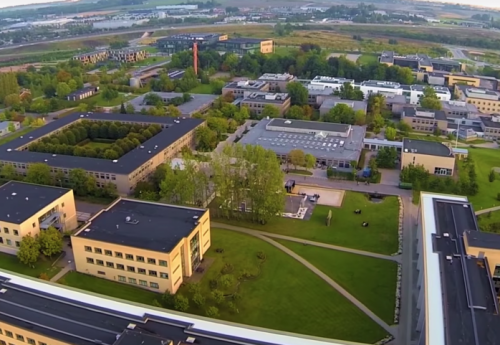The ESCO project at Roskilde University

In 2015, Roskilde University, in collaboration with the Danish Building and Property Agency and Siemens, began the state's then largest energy optimisation project using ESCO as the project model. During the project, new plumbing installations, a new ventilation system, new district heating centres, 6,500 m2 of solar panels on all flat roofs on campus were established, and courses in optimising building use were held for operating staff. This has resulted in a significant reduction in RUC's total energy consumption.
ESCO is a type of project where an energy company, in RUC's case Siemens, calculates the energy savings potential of a given energy optimisation, after which the energy optimisation is implemented and financed through the financial savings resulting from the energy savings achieved. The energy company guarantees that the identified energy savings are realised during a given guarantee period, in RUC's case 5 years, and if the savings are not achieved, the energy company covers the costs. After the guarantee period, the financial savings from the energy optimisation accrue to the company that has had the energy optimisation carried out, i.e. RUC. In this way, the project is cost-neutral and relatively risk-free.
Holistic solutions
The energy optimisation focuses on holistic solutions and thus a combination of several different energy optimisation solutions. This is an interesting learning experience, especially at a university, which is why it is not only the operating staff who have been upskilled. Several groups of students have written term projects with ideas for the ESCO project.
Through the ESCO project, as well as our focus on space optimisation and other parallel energy initiatives, we have achieved a significant reduction in electricity, heating and water consumption over the past 5 years.
RUC energy savings 2015-2019:
Electricity: -33%
Heating: -29%
Water: -31%
Overall (electricity and heating): - 30%.
Source: sparenergi.dk
Climate and environmental accounts
RUC wants to continue this development, which is why RUC had NIRAS prepare climate and environmental accounts in 2020. The report calculates the carbon footprint of activities across the entire value chain - electricity, heating and water, but also air travel, procurement and waste management. With the CO2 inventory, RUC can prioritise future sustainability initiatives, focusing on the areas where the CO2 savings are greatest first. The report includes a list of indicators that will form the framework for RUC's future efforts in the sustainable development of campus operations.